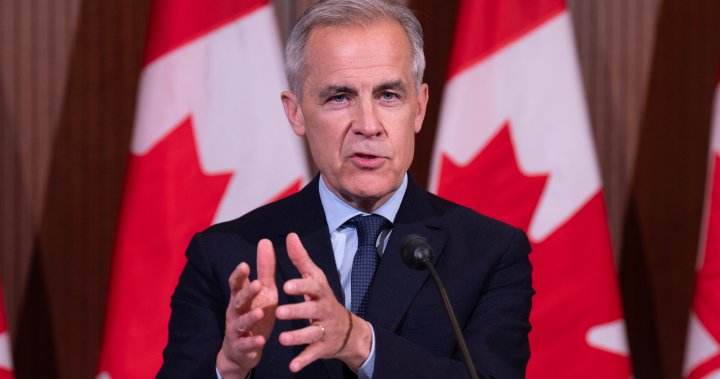Prime Minister Mark Carney said Wednesday that Canada is reversing the trend of “deep integration” with the U.S. and exploring all options for strengthening its national defence — which include U.S. President Donald Trump’s “Golden Dome” missile defence concept.
The Prime Minister’s Office confirmed Tuesday that the federal government’s talks with the U.S. about a new economic and security partnership “naturally include strengthening NORAD and related initiatives such as the Golden Dome,” after Trump unveiled plans for the proposed system.
That’s despite Carney repeatedly warning of the “threat” the U.S. poses to Canada’s economy and sovereignty under Trump, which the prime minister told reporters Wednesday is still true today.
“We had for almost half a century, we as Canada, a relationship with the Americans which was a steady process of deepening integration” on security and between the two nations’ economies, Carney said after a cabinet planning forum in Chelsea, Que.
“That process of deepening integration is over. We are in a position now where we co-operate when necessary, but not necessarily co-operate.”

Carney cited talks with European allies on becoming a full partner in the ReArm Europe Plan for continental defence, as well as the ongoing review of the F-35 contract, as examples of Canada looking beyond the U.S. for “other options.”

Get breaking National news
For news impacting Canada and around the world, sign up for breaking news alerts delivered directly to you when they happen.
“You will see a very different set of partnerships, security and economic going forward,” he said.
“But to be absolutely clear: when it is in Canada’s interests, (its) first best interest to co-operate with the Americans, to strike deals with Americans relations, and particularly in examples like ballistic missile defence, that may be the best option. And if so, we will pursue that.”
Canada doesn’t have a ballistic missile defence program, after declining to join a U.S. system two decades ago. It monitors other missile and aerial threats alongside the U.S. through NORAD, but does not have shootdown authority for more complex threats like ballistic or intercontinental ballistic missiles.
Defence policy experts and military officials told parliamentarians in 2023 that the threats posed by Russia and China have evolved past ballistic missiles, and require new integrated air and missile defence systems to counter.
Last year’s defence policy update committed to an investment in integrated air and missile defence.

Before the federal election, Carney committed $6 billion to acquiring over-the-horizon radar systems from Australia to detect threats in the Arctic. The systems will be part of Canada’s $40-billion NORAD modernization project, which has been ongoing for years.
Carney said missile defence is just one example “where it can make sense” for Canada to continue partnering with the U.S., along with the auto sector.
Intergovernmental Affairs Minister Dominic LeBlanc, who also serves as minister responsible for Canada-U.S. trade, is currently in Washington meeting with American counterparts on strengthening those and other relationships.
“But not all elements of our economic relationship or security relationships does it make sense, and we are actively and aggressively pursuing alternatives,” he said.
Carney said both next week’s Speech from the Throne, to be delivered by King Charles III, and his government’s first budget to be tabled this fall will lay out Canada’s plan for reinvesting in national defence.
That will include steps to meet Canada’s commitments to NATO, which asks its members to spend at least two per cent of GDP on defence. Carney has said he plans to hit that target by 2030.
© 2025 Global News, a division of Corus Entertainment Inc.
U.S. Golden Dome among ‘options’ for Canada’s defence, Carney says





